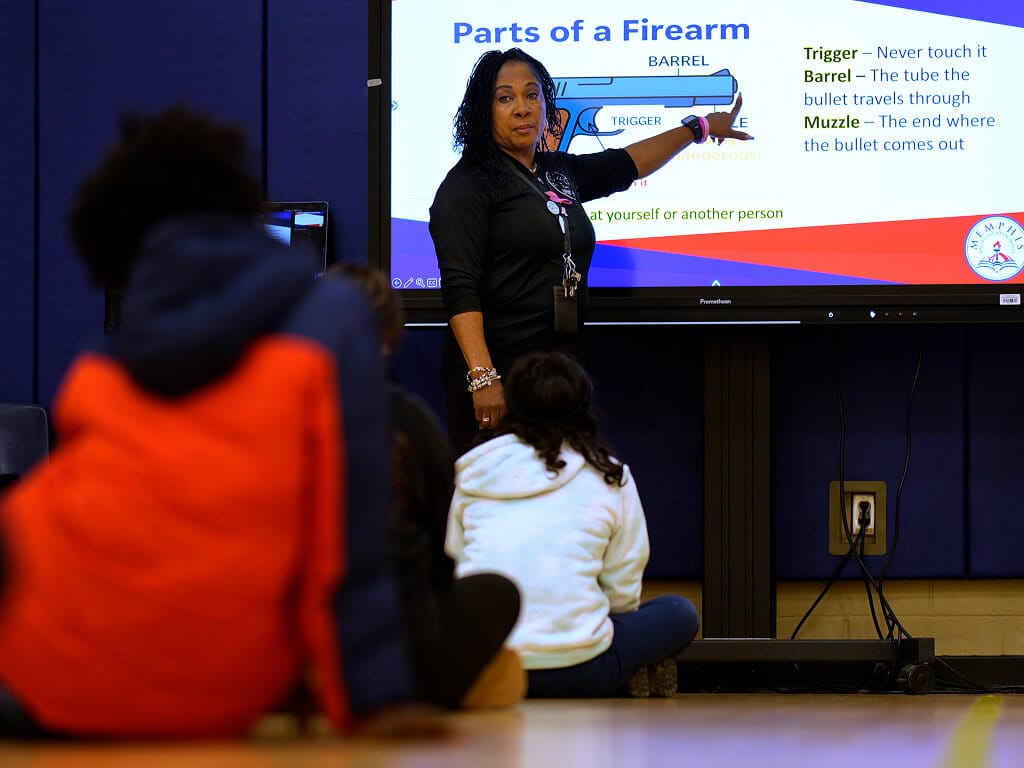Arkansas Mandates Gun Safety Lessons in Schools, Testing a Divided America’s Resolve
Arkansas has become one of the first states to require firearm safety lessons in public schools, igniting national debate over how to address gun violence in classrooms.

Arkansas’ new law requiring firearm safety lessons in public schools has now taken effect. Across the state, students from elementary through high school are going to learn how to respond if they come across a firearm.
The move comes at a time when the nation continues to face growing concerns over gun violence. Although the federal government does not maintain official records on school shootings, reports show that such incidents have risen sharply since 2018, taking more than 200 lives since the tragic Columbine High School massacre in 1999.
Reactions to the law remain divided. Many believe that firearm safety education is a practical step to prevent accidents and keep students safe, while others argue that it distracts from addressing the larger problem of easy gun access. By enacting this law, Arkansas has once again brought the issue of gun safety into the center of national debate.
Keeping Students Safe from Firearms
The new law, Act 229, which was signed in March and has now taken effect, requires all public schools and open-enrollment charter schools in Arkansas to provide age-appropriate lessons on firearm safety. State officials say the goal is to teach students to respond calmly, clearly, and responsibly in potentially dangerous situations.
Experts point out that many children in the United States grow up in homes where guns are present. Even when adults are careless about storage, children need to know what to do if they come across a firearm unexpectedly, whether it is on a shelf, under a mattress, or left on a table.
Rep. R. Scott Richardson of Bentonville, the bill’s lead sponsor, said the idea came from his own experiences and discussions with neighbors.
“Often they come from a variety of backgrounds that may or may not have included exposure to firearms at home,” Richardson said. “All of our children play together and visit each other’s homes. In that process, they might come across an unsecured gun, and the question is, how would they react?”
Flexibility for School Districts
The Arkansas Game and Fish Commission (AGFC) collaborated with the Arkansas Department of Education to create the state’s new firearm safety curriculum.
Under the law, each school district has the freedom to decide how the lessons are taught. Schools may either use the state-provided materials or develop their own curriculum, as long as it meets the requirements set by the legislation. Districts can also determine who will lead the instruction, whether it is teachers, staff members, or local law enforcement officers invited to discuss gun safety.
Spencer Griffith, deputy director of the AGFC, said schools might integrate firearm safety lessons into their existing safety programs, such as fire or tornado drills. “We hope they will include this in a way that helps prevent some of these accidents from happening, but not in a way that adds political focus or fear, because this is not the place for that,” Griffith said.
Part of a Broader Republican Effort
Arkansas’ new law is part of a broader effort among Republican-led states to introduce firearm safety education in schools. Along with Tennessee and Utah, Arkansas has passed legislation requiring public schools to teach students about gun safety. All these laws specify that the curriculum must remain neutral and avoid taking any stance for or against gun ownership.
Utah’s law allows parents or guardians to opt their children out of the lessons, while Arkansas’ version gives parents the option to choose alternative, off-campus programs that may include live firearm instruction, but only with parental consent. Across all versions, the core message stays the same: stop, do not touch, leave the area, and tell an adult.
However, Democrats have largely opposed these efforts. A similar proposal in Arizona was vetoed by the state’s Democratic governor, while lawmakers in at least five other states have introduced comparable bills.
A Deep Divide on How to Respond
Arkansas and other Republican-led states have once again stirred national debate over gun control with their recent measures. In 2022, the U.S. Centers for Disease Control and Prevention (CDC) reported that firearms had become the leading cause of death among children and teens in the United States. According to an Associated Press analysis, both Arkansas and Tennessee record youth firearm death rates higher than the national average.
While most agree that gun violence among children is a serious issue, the question of how to address it remains sharply divided. Critics, including some Democrats and gun control advocates, argue that teaching children about guns fails to tackle the deeper causes of gun violence. Supporters counter that in a nation where millions of homes contain firearms, safety education is not only practical but also one of the best ways to reduce accidents and save lives.
The debate is far from over. Still, efforts made with good intent deserve encouragement.





